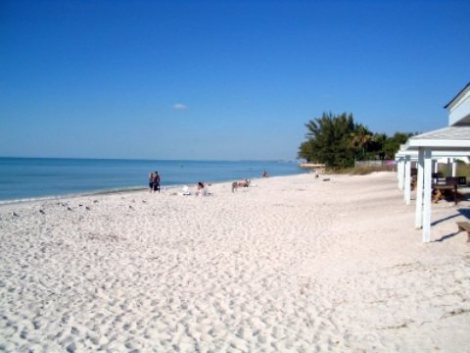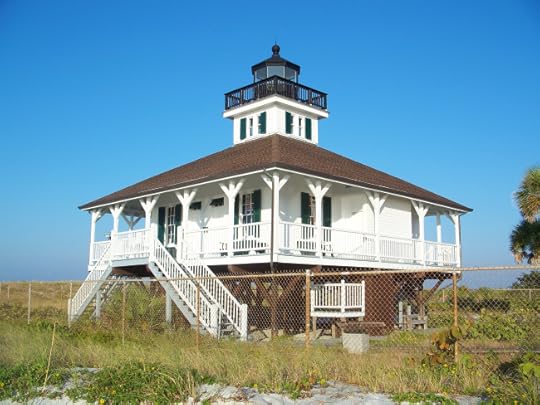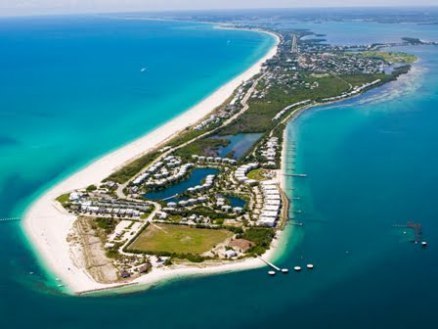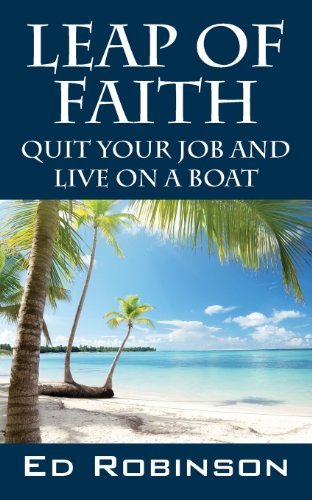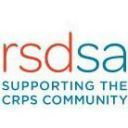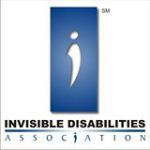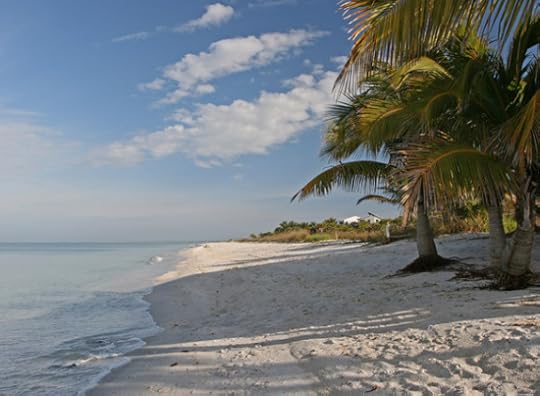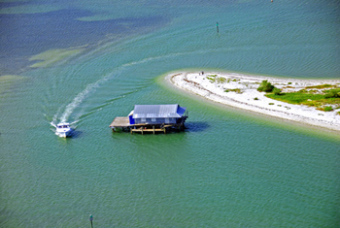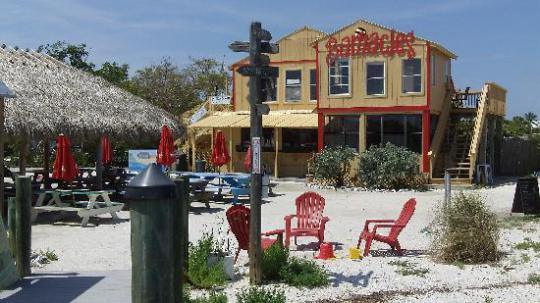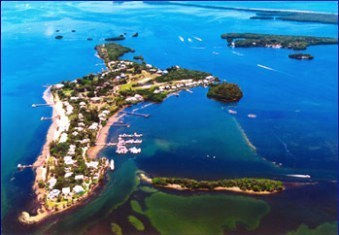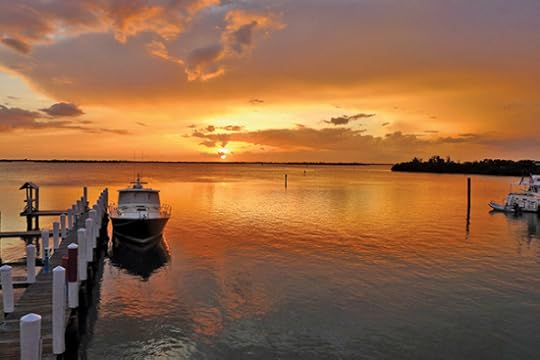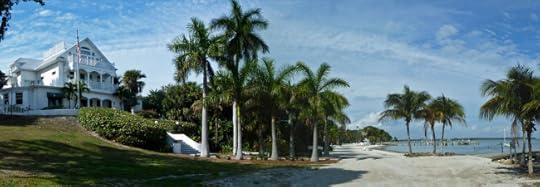Ed Robinson's Blog, page 16
March 26, 2014
Reading Recommendations – 56 Authors promoted!
I have not read all these books, but here’s a great blog for reading recommendations.
 Originally posted on Books: Publishing, Reading, Writing:
Originally posted on Books: Publishing, Reading, Writing:
On my other blog,
Reading Recommendations
, I have been posting promotion for my fellow authors, recommending their books to readers, and offering the authors’ suggestions on good books to read. Since Nov. 18, 2013, I have posted information about
56 Authors
! Thanks to everyone participating and sharing these blog posts, the number of readers visiting this site and now following has increased by leaps and bounds. I still have many more authors scheduled to promote over the coming weeks, so please continue to check out the new blog posts I publish, discover some interesting reading suggestions, reconnect with favourite authors, and learn what they all have to tell us about themselves and their writing as well as their own reading recommendations.
So far, I have published two recaps of the first 16 authors and the next 20. Here then are the most recent 20 Authors who have…
View original 379 more words


Gasparilla Island
According to Florida folklore, Gasparilla Island gets its name from the legendary pirate captain José Gaspar (“Gasparilla“, c. 1756–1821), who had his base on the island and purportedly hid his fabulous treasure there.
Situated above the Boca Grande Pass, just north of Cayo Costa, this island is famous for two things; The town of Boca Grande and the world’s best tarpon fishery. It’s the playground of presidents and Fortune 500 CEOs. You can visit too, as long as you’re willing to pay the 6 dollar toll to cross the old swing bridge from Placida. You’ll pay again to park at one of the public beaches, or you can visit The Southbeach Bar & Grill and skip the parking fee, (if you can find a parking spot).
Having the reputation for hosting society’s elite and for charging to visit, keeps the beaches uncrowded. The wide expanse of white sand leading down to the clear, blue waters of the Gulf of Mexico are a sight to behold.
The Boca Grande Pass is known worldwide for it’s awesome tarpon fishing, and is also the entrance to beautiful Charlotte Harbor.
The old lighthouse on the southern point of Gasparilla has been converted into a museum, and is worth a visit.
Although I could never afford the real estate there, it’s nice to visit once in a while. The anchoring possibilities are either inside Boca Grande Bayou, or just outside behind the golf course. I have taken the dinghy into the bayou from Cayo Costa when the winds are light. It’s a short walk into town from there. Note: there is a public dock available, but dockage is limited to 15 minutes during tarpon season (mid-april thru June). Anchoring inside the bayou means dropping a hook, then backing into the shore and using a stern hook or tying off directly to the mangroves. There is zero swing room. I wouldn’t try it in my boat, but I see boats less than 30 feet do it all the time.


March 25, 2014
Free Sample: The Untold Story of Kim
“Natural forces in us are the true healers of disease.”
Hippocrates
This book is dedicated first to my wife, the lovely Miss Kim. Its purpose is to provide hope for the many thousands who suffer from chronic pain and to raise the awareness of poorly understood pain syndromes such as RSD/CRPS.
Table of Contents
Prelude
It’s Joe Biden’s Fault!
RSD/CRPS
The Early Doctors
Becoming a Caregiver
The Witch Doctor
Lawyers, Drugs, and Money
A Dream Amid the Chaos
Taking Action
Spies at Home and on the Road
Taking the Leap
The Robot Doctor
Spies in Florida
Doctored Video
False Statements
Moving On
Dope
New Adventures
The Last of the Drugs
Running Out of Money
Author’s Thoughts
Afterword, by Kim Robinson
Prelude
I came home from work to find Kim lying on the living room floor. She was curled up in the fetal position clutching her affected leg with both arms. She was crying. I’m not talking about a whimper. I’m talking about a full blown sobbing wail.
I dropped whatever I was carrying and rushed to her side. I held her head in my lap and stroked her hair, not knowing what else to do. She looked up at me through tear soaked eyes and said, “Cut my leg off. Please, make it go away.”
This is life with RSD.
It’s Joe Biden’s Fault!
Kim’s position at Dover Downs Hotel and Casino was as a banquet captain. She was very proud of her achievements and worked hard to be a success. Throughout her time there she got to meet many celebrities, singing acts and NASCAR drivers. She particularly enjoyed taking care of famous country singers like Jason Aldean and Jake Owen.
On this day she was to host a fundraiser for Vice Presidential candidate Joe Biden. It was October 14, 2008, just weeks away from the presidential election. She arrived at work to find Biden’s security team forbidding entrance to all employees. Each one would have to wait their turn, eventually being subjected to an invasive pat down, security questionnaire and metal detection. A long line formed while tall men in dark suits decided if anyone was a threat.
Entering the building woefully behind schedule, employees rushed to catch up. Nervous about botching the most important event of her career, Kim came to the aid of her employees and began to set tables and make coffee. Even her boss was enlisted in the effort. All normal sense of routine was lost. Servers ran about in all directions and caution was thrown to the wind.
As Kim crouched down to retrieve an extra coffee urn from a low shelf, her boss was running down the hall pushing a speed cart. This is a large metal device designed to carry dozens of food trays at once. In his haste he never saw her. The heavy metal cart threw Kim across the hall. The point of impact was at the base of her spine, slightly into her left buttock.
It was a day she would never forget. It was also the last day she would ever work at Dover Downs.
At the hospital it was thought she may have broken her tailbone. X-rays however, were negative. An MRI discovered a torn hamstring, and damage to something called the piriformis muscle, which runs along the sciatic nerve through the buttock and into the upper thigh.
She was referred to an orthopedic surgeon whom I’ll call Christian doctor. He was a very nice man who wore a large gold cross around his neck. He seemed very compassionate, and prescribed light physical therapy and massage. The facility he referred her to was associated with his practice.
A few weeks of therapy passed and the pain worsened. Kim was reporting more pain and discomfort now, then she had experienced just after the injury. Christian doctor didn’t know what to think. She continued with the daily therapy sessions to no avail. Her condition was obviously worsening.
Aqua therapy was added to her care. Acupuncture was tried to no avail. A Tens unit was ordered. This little machine featured electrode pads that you attached to the painful area. Small electrical shocks or vibrations help disrupt the pain signals, break up scar tissue and provide relief. None of this was helping poor Kim. The surgeon considered surgery, as surgeons are prone to do. The therapist wanted more therapy, as therapists are prone to do. A chiropractor was called in. No improvement was noted. Eventually she was sent for an Electromyography. An EMG is a test where several electrodes are inserted into the muscle tissue and a neurologist observes the muscle activity while inserting the electrodes. It’s painful. The electrodes are loaded with an electrical current that zaps the muscle. The test results came back hinting at neuropathy, or nerve pain often caused by Diabetes. Did Kim have diabetes? More tests were ordered. The results said no, she did not.
Off to see a neurologist, whom we’ll call Dr. Handsome. Kim had a little crush on the good looking professional. He studied the previous results and dismissed them as fraudulent. No he didn’t see signs of neuropathy, but was ordering a second EMG, to be certain. More pain was in store for Kim. She feared having this procedure done again and resisted. She was given Valium to take in preparation. It was still very painful and brought Kim to tears. It was deemed necessary, but it seemed so invasive. Causing pain to a person already suffering seemed an odd decision. Upon receiving the results of the second EMG, Dr. Handsome declared that she had no neuropathy and as a neurologist there was nothing else he could really do for her.
Finally on March 17, 2009, the theory that this may be Reflex Sympathetic Dystrophy was first floated. Christian doctor advised Kim to go home and study up on RSD via the internet. He warned her that she would not like what she found. I was away on business at the time, so Kim spent her weekend reading, crying and worrying about her future, alone. The internet was full of horror stories. This was lousy advice to give her right then. She would start her long journey with visions of horrible pain and no cure prominent in her mind.
When I returned home I was confronted with a dire prognosis and a very depressed wife. Kim had learned that the only effective treatments for RSD were those employed after early diagnosis, within two to three months. Obviously we had missed that window of opportunity. Five months had passed since her injury. She was well into the second stage of the disease and rapidly progressing to the third and final stage.
There appeared to be no real cure for those who were not diagnosed early.
RSD/CRPS
Reflex Sympathetic Dystrophy, also known as Chronic Regional Pain Syndrome, is a rare, chronic (long-term) and progressive condition characterized by severe pain, inflammation and skin changes.
Patients often describe the pain as a burning sensation which affects arms, legs, hands or feet. It is most common in women between the ages of forty and sixty.
It is usually the result of some minor injury, like a broken bone or contusion. The severity of the pain is out of proportion to the original injury, for reasons not quite understood. As I understand it, the original pathway that sends pain signals to the brain is stuck open. Even though the injury has healed, the pain signals are still being sent. There are also very real symptoms that occur. Kim suffered with all of them.
Changes in skin temperature: the skin may be sweaty in some cases, or cold and clammy in other.
Changes in skin color: there may be blotches or streaks on the skin. Pink or blue tinges may appear.
Skin texture: the skin may turn thin and shiny.
Nails and hair: hair and nails may grow at unusual speed.
Joints: affected joints become stiff, painful and inflamed.
Mobility: the patient may have a harder and harder time using the affected limb.
Allodynia: the skin of the affected area becomes hyper-sensitive to touch. Even the lightest of clothing causes pain.
Over time, the affected limb can become cold and pale and undergo skin and nail changes as well as muscle spasms and tightening. Once these changes occur, the condition is often irreversible.
Historically, RSD was noticed during the Civil War in patients who had suffered a gunshot wound with damage to the median nerve. In 1867 the condition was known as causalgia from the Greek term meaning burning pain. The exact causes of RSD are still unclear. Patients in the later stage of RSD present with a pale, cold, painful and atrophic extremity. Patients at this point will also have osteoporosis. Kim would progress through all of the stages.
Before the accident, Kim was a very active professional. Her job required her to walk miles each day, often hustling to make a meeting or cater to the needs of some big shot. She would often work seventy hours or more per week. During race week, which was twice per year, she would log over one hundred hours, sleeping in the Green Room for a few hours each night. It was hectic, but she was very proud of her position. She had the long sculpted legs of an athlete. She relied on caffeine to keep her going, never letting the stress slow her down.
After the accident, she became trapped in a body that wouldn’t cooperate. Her left leg quickly began to wither away. Pain was her constant companion. She was always a beautiful woman. I loved to be seen with her in public. There is nothing like having a tall, slender, head-turning blonde on your arm at a special event. But we started noticing changes. She wouldn’t wear any clothing on her legs due to the extreme sensitivity. The blotches and streaks of color were clear to see. Her “little leg” as she called it, became noticeably thinner than her good leg. Her toenails grew malformed.
The little leg stiffened and she lost coordination. Balance became a problem. She told me it felt like a vise tightening a little each day on her leg. She would cry due to the bone crushing agony she was experiencing.
Meanwhile she had to get herself to therapy every day. I missed a lot of time at work taking her to various doctor’s appointments. We didn’t fully understand everything that was happening to her, but we knew that none of the treatments were helping. She became despondent and I felt helpless. I had no idea what to do.
We were newlyweds at the time. Our new life together held so much promise. We both had great jobs. We were both very healthy and relatively young. We were deeply in love and the future had seemed limitless for us. Now it was all being stolen away by a disease that we couldn’t comprehend.
Nothing that was being said or done provided us with any hope.
The Early Doctors
Christian doctor was convinced now that Kim indeed had RSD. He told us her only option was to see a pain management specialist. She was stuck with this condition and it would probably get worse. Let’s try to control the pain. He recommended us to Dr. Quack across town.
On her first visit with Dr. Quack, he quickly pronounced that she did not have RSD. He wasn’t convinced that RSD even existed. His examination was brief and pointless. She left with a prescription for a mild narcotic painkiller.
It did nothing at all to relieve her pain. We called to make a second appointment in hopes of having her medication changed or adjusted. As she sat in the exam room waiting to see Dr. Quack, a nurse came in and escorted her out the back door. The doctor would not be seeing her today. Out front she noticed the locked doors and other patients milling about wondering what was going on. We never did find out what happened to him. This didn’t speak well for the recommendation of Christian doctor.
Our second attempt with a pain management professional was with Dr. Senile. This older gentlemen appeared to have lost some of his higher cognitive functions. He did give her a stronger medication, but nothing much else. One day I had an idea. Back in my younger days as a baseball pitcher I had experience shoulder pain. Someone gave me something called DMSO (Dimethyl Sulfoxide). DMSO was a liquid originally used as a solvent to clean parts in factories. It was discovered that once arthritic workers were experiencing less pain and greater mobility after working with it. You rubbed it on the problem area, and over time your pain lessened and your mobility improved. It worked pretty well for me.
I mentioned it to Kim. We were willing to try most anything at this point. She called Dr. Senile and he said, “Sure, come on in and I’ll give you a bottle.” I drove the hour to pick it up and remembered a curious side effect. The liquid, once applied, gave you bad garlic breath. I warned Kim about this, but neither of us thought too much about it.
When I got home from work the next day, I entered into Garlic Hell. The whole house smelled very strongly of garlic. This wasn’t just a simple case of garlic breath. Kim’s entire body reeked of it. She almost had a fog around her as the pungent odor seeped from her pores. That was the last dose of DMSO for her. It took several days for our air quality to return to normal.
When we called to make the next appointment with Dr. Senile, we learned that he had suffered a stroke. No one knew when, or if he would return to his practice.
We were back to square one. Kim had no doctor, no relief, and no hope.
It was at this point that we were introduced to a “patient advocate”. Up until now the worker’s compensation insurance carrier had been patient. We’ll call them the Big Z. They assigned a nurse to monitor Kim’s care and to make recommendations. We felt we had no choice but to listen to her.
She set us up with yet another pain management specialist, our third. His office was two hours away, which became a major inconvenience for us. I’ll call him Dr. Drill Sergeant. He was clearly an advocate of the No Pain No Gain school of thought. The patient advocate kept drilling him about RSD. “Does she really have it?” His examination was thorough and he wouldn’t be rushed. He also had the records from all the previous doctors. Eventually he agreed with the diagnosis. You could visibly see the alleged advocate deflate.
He prescribed yet another new narcotic called Embeda. This one actually offered a bit of relief. He wanted Kim to perform regular exercise, see a chiropractor, and attend a different therapist. The advocate sent her to what turned out to be a “Work Hardening” program. Kim lasted one day and came home in excruciating pain.
We called our lawyer about this woman’s intrusion into Kim’s treatment. We were informed that we did not have to allow her into the doctor’s office nor follow her recommendations on which provider to see.
Not knowing where else to turn, we continued to see Dr. Drill Sergeant. He was tough. Kim’s not working hard enough. It’s going to hurt anyway so just do it. He lacked any compassion whatsoever.
After no improvements were noted, he decided to give Kim some pain blocking injections. This was to be done under sedation, in the hospital. We drove the two hours on the appointed day and took our places in the waiting room. Kim hobbled to the water cooler and took a small sip of water. She was immediately called to the nurse’s station. “I’m sorry ma’am, but we have to cancel your injections. You can’t drink water before the procedure.” There we were, two hours from home. There would be no relief today.
The drive home was a somber one. I was livid with the hospital, but tried hard to keep my emotions in check. Kim just sat with her head hung down. There was nothing to do but keep on keeping on.
Eventually we returned for the shots. Kim emerged numb from the waist down and a bit high. The drive home featured her telling me it was our day to bring snacks for the soccer match. There was no soccer match. In fact, neither of the kids was playing soccer at the time.
She seemed to be pain free on that drive. It was to be short-lived. As soon as the numbness wore off, the pain returned. The shots didn’t work. We returned two more times, for two more rounds of shots. The outcome was the same. Dr. Drill Sergeant had no other tricks. He upped the Embeda and sent us to a chiropractor. He also prescribed another medication called Neurontin. This was supposed to help calm nerve pain. Over the course of several months he gradually increased her dose to thirty-six hundred milligrams per day. We later learned this was a ridiculously high amount.
Dr. Yacht was a nice enough fellow. He liked to brag about his big boat that he kept on the Jersey shore. He also drove a fancy BMW. His modus operandi was typical chiropractor fare. Kim went for treatments three times a week for months with no discernible improvement. Dr. Yacht decided to up his game. He started stringing up Kim in his traction machine. Picture a mid-evil torture device designed to stretch the spine millimeters at a time. Not surprisingly, this had a very negative effect on Kim’s well being. The pain worsened. The other symptoms worsened. She was going downhill fast.
At this point we took it upon ourselves to try to get into John’s Hopkins hospital in Baltimore, Maryland. We made enough phone calls until someone agreed to consult with Kim and suggest a course of treatment. After a lengthy exam and thorough study of her records, they offered one possible option. They wanted to insert a spinal cord stimulator. An electrode would be inserted into the spine. It would give off tiny vibrations to disrupt the pain signals being sent. First a trial would be done with an external controller. If the trial was a success, surgery would be performed to install the controller under her skin.
They sent us home with a DVD on the procedure, which included testimonials from happy patients. We did our own research. It appeared that the SCS was an option of last resort. Patients were not eligible unless all other options had failed. It had an alarming rate of complications, which usually meant additional surgery to adjust the electrode.
Our other physicians were not enthused about the idea. We felt we didn’t have any other choice. After thinking it over we asked to be approved for the surgery and insertion of the Spinal Cord Stimulator. Our request was denied by the insurance company. Kim was willing to take the risk in hopes of any chance at all that it would help. Big Z was unwilling to pay for it. The option of last resort would not be available to us.
Find out how Kim overcame all the obstacles and won her battle with RSD/CRPS.
To read the rest of The Untold Story of Kim, click this link to Amazon.com
Kindle version is only 2.99
Number 1 Bestseller in Physical Impairments
Top 10 in Pain Management


Sailing Books
You may also enjoy Leap of Faith: Quit Your Job and Live on a Boat
Leap of Faith: Quit Your Job and Live on a Boat
 Originally posted on Anzac Sailing Around the World:
Originally posted on Anzac Sailing Around the World:
If like me, you can’t yet be out there actually sailing around the world, there are plenty of books to help with your sailing plans and assist to build up your sailing knowledge or are just great armchair sailing books. Here are some of the titles that I have been reading of late:
World Cruising Planner by Jimmy Cornell – a wealth of information in here, and gives you so many tips on how and when to plan your route, in all the different oceans, and all sorts of interesting places to call in to along the way. Highly recommended and I will be buying his other books – World Cruising Routes and World Cruising Destinations also. Jimmy Cornell also has his own website http://www.noonsite.com which is well worth a look.World Cruising Routes: 7th edition

Manual of Seamanship – Tom Cunliffe – I am currently studying this as part…
View original 750 more words


Best Facebook Resources for RSD/CRPS
Since the release of The Untold Story of Kim, I’ve made some new friends and fans who suffer from the insidious syndrome. I’ve also spent some time perusing Facebook looking for like-minded people. Often those who suffer debilitating pain feel alone and don’t know where to turn. These great FB places can help you to learn more about RSD/CRPS, share your story, or offer a friendly voice.
Some are pages you can “Like”, and some are groups you can join. Go and give them a Like or join up with others just like you.
Reflex Sympathetic Dystrophy Association
RSDSA promotes awareness of CRPS, funds research towards more effective treatments and a cure, and supports individuals with CRPS.
https://www.facebook.com/RSDSA?ref=br_tf
Invisible Disabilities Association
The Invisible Disabilities Association (IDA) IDA’s Mission is to Encourage, Educate and Connect People and Organizations Touched by Illness, Pain and Disability Around the Globe!
https://www.facebook.com/InvisibleDisabilities/info
RSD aka Really Sucks Dystrophy
Complex regional pain syndrome · Reflex Sympathetic Dystrophy Syndrome ·Chronic pain
This is a community (Group) to share with fellow sufferers of RSD/CRPS
RSD/CRPS Friends In Pain
Welcome and thank you for visiting my page! I created this in order to help give inspiration and hope, by using quotes, stories and links, to people with not only RSD/CRPS, but also other chronic pain disorders!!
https://www.facebook.com/RSDFriendsinPain
RSD/CRPS Doesn’t Own Me
Our mission is to remind people with RSD/CRPS that life is still worth living. We want to offer support, stories of hope, and encouragement to fellow RSD/CRPS Angels. It is our hope to raise RSD/CRPS awareness that will help others understand the seriousness of this disease.
https://www.facebook.com/CRPSDOM
Chronic Regional Pain Syndrome (a.k.a. Reflex Sympathetic Dystrophy)
This group is for those who have CRPS, and for those who know someone with CRPS that want to better understand what they are dealing with.
https://www.facebook.com/groups/CRPS.RSD/
rsdcrpssociety
A small, intimate group with lots of interaction. You’ll find friends here.
https://www.facebook.com/groups/rsdcrpssociety/
If you have not read The Untold Story of Kim, the Kindle version is available at Amazon for just 2.99.
Paperback will be available very soon.


March 24, 2014
Ed Robinson – update on release of a new book
Nice plug from Reading Recommendations.
 Originally posted on Reading Recommendations:
Originally posted on Reading Recommendations:
Ed Robinson, an author who lives on his boat somewhere on the west coast of Florida, was featured on
Reading Recommendations
on
Jan. 16, 2014
, promoting his recent release,
Leap of Faith / Quit Your Job and Live on a Boat
.
Ed’s back now to tell us of a new book he has just published, The Untold Story of Kim.
Bestselling non-fiction author Ed Robinson brings you a powerful true story of one woman’s triumph over pain. It will lead you to hate doctors, lawyers, and insurance companies. By the time you finish, you’ll have fallen in love with Kim.
This deeply inspiring tale is destined to become the most important book ever written about chronic pain and pain management in today’s healthcare environment.
This book was written for sufferers of Chronic Pain. Its purpose is to provide hope for the many thousands who suffer from chronic…
View original 34 more words


March 21, 2014
North Captiva Island
Another destination that we can reach from Pelican Bay via dinghy is North Captiva. It’s a separate island from it’s bigger sister Captiva Island, and can only be reached by boat or small plane. There is no bridge from the main island to North Captiva. The locals like to call it simply North Cap.
North Captiva Island is known for its pristine white beaches and some of the best shelling in the world. There are 5 miles of beautiful beaches to walk on North Captiva, two-thirds of which border a 700-acre state land preserve. Enjoy walking for miles and not seeing any signs of civilization except the footprints you leave in the sand. Many rare, colorful shells can be found along the shoreline.
The interior is dotted with million dollar homes with a spectacular view. Many are available to rent.
Our visit involves taking a 5 or 6 mile ride in the dinghy to Safety Harbor, on the intercoastal side of the island. An old stilt house/fishing shack guards the entrance.
We had lunch at Barnacles, which used to be called Barnacle Phil’s. Good burgers and cold beer, but we dropped a hundred bucks on lunch for four. Must have been the bar tab. There are several canals to explore in a small boat, but Safety Harbor is too shallow for larger vessels.
It’s a quirky little community, mixed with crusty locals and upscale vacationers. There are several fine resorts where on can enjoy all the tropical amenities and watersports if so desired.


March 20, 2014
The Untold Story of Kim is now available at Amazon
Bestselling non-fiction author Ed Robinson brings you a powerful true story of one woman’s triumph over pain. It will lead you to hate doctors, lawyers, and insurance companies. By the time you finish, you’ll have fallen in love with Kim.
This deeply inspiring tale is destined to become the most important book ever written about chronic pain and pain management in today’s healthcare environment.
Kindle version is available for 2.99


March 18, 2014
Useppa Island
Just east of the barrier islands on the west coast of Florida, lies Pine Island Sound. It is dotted with dozens of small, uninhabited mangrove islands. Only a few show any signs of civilization. The most exclusive of these is Useppa Island.
It has been known for luxury resorts since the late 19th century, and it is currently the home of the private Useppa Island Club. On May 21, 1996, it was added to the U.S. National Register of Historic Places, due to its archaeological significance. The Barbara Sumwalt Museum is located on the island.
The Useppa Island Club is more exclusive than the island itself. If you’ve got money to burn and are looking for a world class island getaway, check it out: http://useppa.com/
There are assorted (expensive) membership options. Otherwise, if you can’t get an invite from a current member, Captiva Cruises offers day excursions from South Seas Island Resort and McCarthy’s Marina on beautiful Captiva Island, Florida.
Like the nearby islands of Gasparilla, Sanibel, and Captiva, a folk etymology has developed connecting Useppa Island’s name to the legendary pirate captain José Gaspar, also known as Gasparilla. A local folk story, extant in at least two versions, tells of Gaspar kidnapping a Spanish princess, with whom he becomes enamored. When she spurns his advances he kills her, but is overtaken by remorse and buries her himself on the beach. One version identifies the princess as Josefa, daughter of Martín de Mayorga, Viceroy of New Spain from 1779 to 1782, and indicates that her burial place of Useppa Island still bears her name in an altered form.
Kim and I have explored the shoreline in our dinghy on numerous occassions. The homes on shore are simply gorgeous, with a beautiful view of Pine Island Sound. Manatee and dolphin abound in the surrounding waters. Fishing is excellent for snook, redfish and tarpon in season. Don’t wander to close to the club and marina, the harbormaster will run you off!


March 17, 2014
Ketamine Therapy is Valuable in the Treatment of CRPS
Kim had some experiences with ketamine. We explored several options available but some are not permitted in the US and few, if any are covered by insurance.
 Originally posted on The CRPS Institute:
Originally posted on The CRPS Institute:
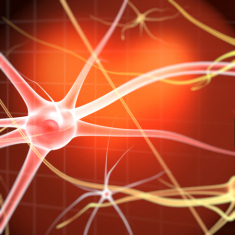 A new development has found a way for patients suffering from the condition known as Complex Regional Pain Syndrome (CRPS) to relieve their pain and stress. Ketamine infusions are being suggested as a safe and effective option for treating this condition. When taken in small doses, it is considered a more effective choice than using large doses of narcotics.
A new development has found a way for patients suffering from the condition known as Complex Regional Pain Syndrome (CRPS) to relieve their pain and stress. Ketamine infusions are being suggested as a safe and effective option for treating this condition. When taken in small doses, it is considered a more effective choice than using large doses of narcotics.
Ketamine has long been known to be able to inhibit the activity of the N-Methyl-D-aspartate (NMDA) receptor. It is thought that the NMDA receptors in CRPS patients are hypersensitive or overactive and are significant source of the chronic pain associated with CRPS.
The NMDA receptor is a neurotransmitter that is responsible for receiving and transmitting pain signals in the spinal cord and brain. These neurotransmitters are located in the synapses throughout the central nervous system. When electrical stimulation, such as pain signals, are interpreted by the brain a chemical known…
View original 180 more words




